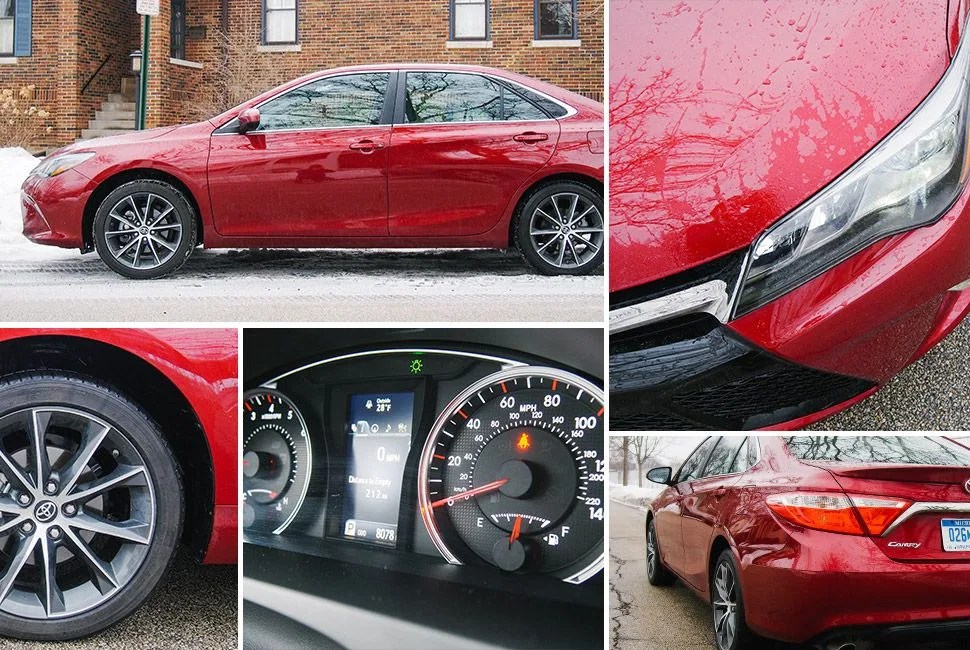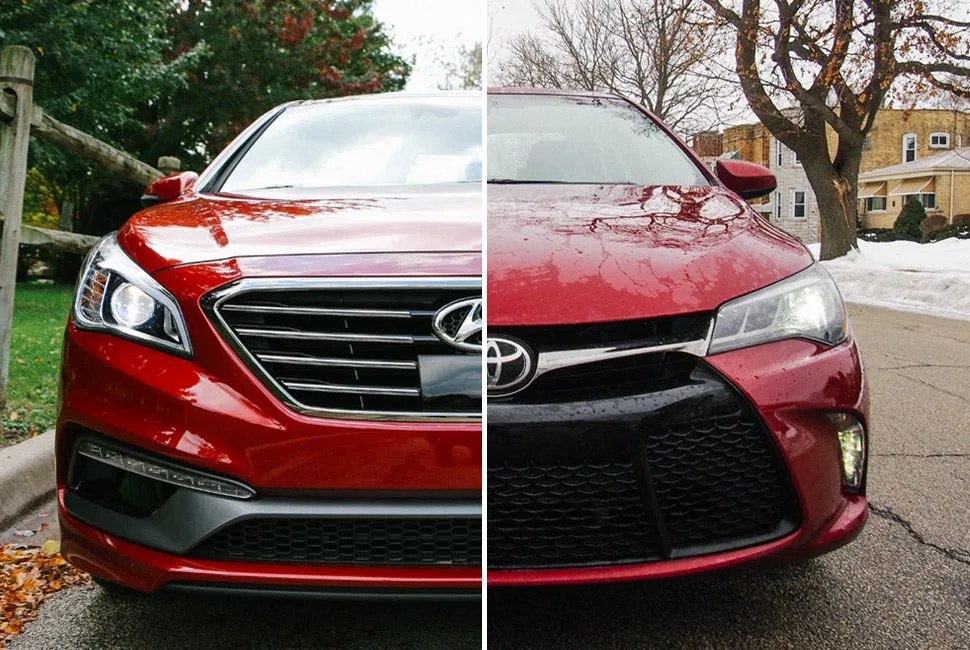Where did the sporty family sedan begin? Was it the third-generation Honda Accord EX, with its front and rear double wishbone suspension, great steering, angular design and flip-up headlights? Or did it come from true sports sedans, like the BMW M5 or the Mercedes-Benz E63 AMG? We may never know. But one thing we do know is that these five-seaters for suburbanites are no longer compromising the self-respect of their drivers. You can carry Costco-sized grocery loads. You can haul a gaggle of kids around town. And, most importantly, you can drive without losing your dignity. The 2015 Toyota Camry XSE ($33,500) and Hyundai Sonata Sport 2.0T ($28,575) are family sedans that sport handsome designs and a little chutzpah.
MORE FAMILY HAULERS: 7-Passenger SUVs | Infiniti Q70L V8 AWD | Five Great Crossovers
We drove the sportier versions of these family sedans from the Far East (though the Sonata is built it Alabama, and the Camry in Kentucky). The new Hyundai Sonata displays a less daring design than the rakish sixth-generation Sonata, but it’s also a more refined, more grown-up version of the Korean family phenom. In 2.0 turbo form, it’s the sportiest Sonata in the line. The new Camry takes up the mantle of the supremely successful sedan, but with a decidedly more adventurous design. Outfitted in XSE trim, it’s a lean, athletic machine. Both dose up on sporty and dose down on vanilla, and they make a strong argument that you can have a touch of excitement in your drive without sacrificing the domestic perks of the family sedan.
Toyota Camry XSE

The 2015 Camry XSE received a brazen exterior refresh, for which there was really no compelling financial reason, by virtue of sales figures in 2014. But Toyota is trying to redefine itself — hence the big mid-act wardrobe change. The body is leaner and meaner, with noticeable hood creases, a rising character line along both doors, a big black lower front grille and boomerang fog lights. The XSE trim leaves the impression that the only things that stayed the same from the 2014 Camry are reliability and seating capacity.
The Camry’s interior layout is utilitarian and simple, but there is a 4.2-inch TFT screen in the center stack and a wireless charging pad for smartphones. For consistency with the XSE’s more athletic exterior, the interior aesthetic gets perforated faux suede seat inserts and high-contrast red stitching, which add a dash of color to an otherwise conservative cabin. The center console buttons are large, the steering wheel is hefty and comes with thumb cutouts, and the paddle shifters feel good in the hand. And the XSE doesn’t scrimp on the tech goods: it comes with LED headlights, leather seats, and the Entune entertainment and navigation system. You can also upgrade to a sonorous JBL sound system and a Technology Package with self-adjusting radar cruise control, automatically adjusting high beams and pre-collision and lane-departure warnings.

